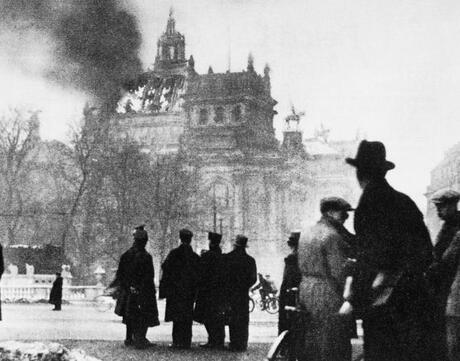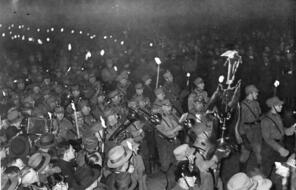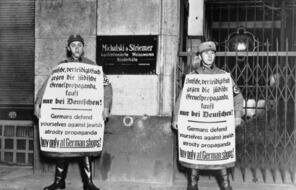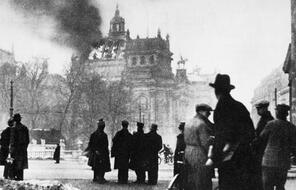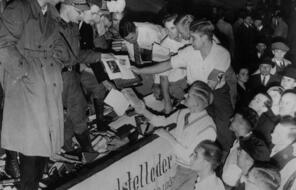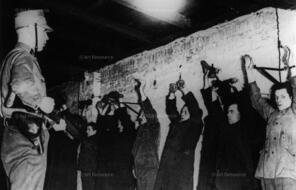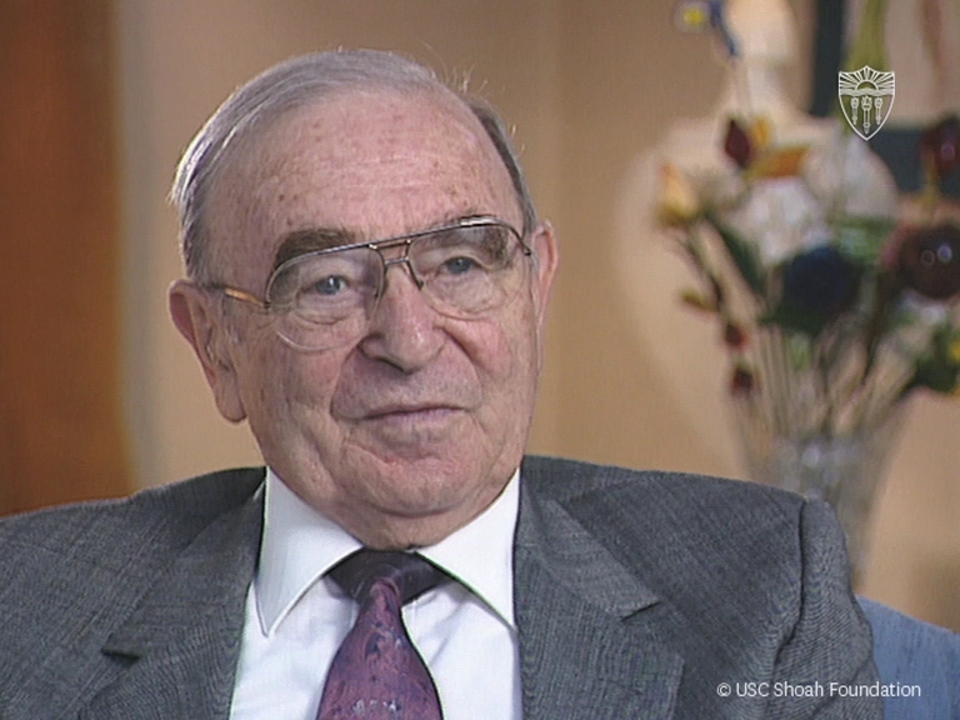Historians point out that Hitler’s political position upon his appointment as chancellor in January 1933 was precarious. Yet, by July of 1933, Hitler and the Nazis had succeeded in dismantling democracy and laying the foundation for dictatorship in Germany. Few Germans believed this could happen. In fact, many did not believe Hitler would remain in power for long. After all, in the 14 years since the creation of the Weimar Republic, Germany had had 14 chancellors, most of whom served for less than a year. Recalling a discussion with his father on the day Hitler became chancellor, journalist Sebastian Haffner wrote in 1939:
I discussed the prospects of the new government with my father. We agreed that it had a good chance of doing a lot of damage, but not much chance of surviving very long . . . How could things turn out so completely different?
The events described in this lesson begin to answer Haffner’s question. The Nazis moved swiftly in early 1933 to take advantage of the weaknesses of the Weimar Republic. Previous chancellors had already invoked emergency powers under Article 48 of the Weimar Constitution (see Lesson 9: The Weimar Republic) to bypass the Reichstag and enact their own laws to try to pull the country out of the Great Depression. According to the constitution, only the president could invoke Article 48, so Paul von Hindenburg had to approve each of the measures chancellors took under emergency powers. Hitler seized on those powers, relying on Hindenburg’s willingness to sign off, to eliminate opposition, increase his power, and dismantle democracy.
On February 27, 1933, less than a month after Hitler became chancellor, the Reichstag building in Berlin was set on fire. While historians continue to debate who set the fire, Hitler chose to immediately blame the Nazis’ chief political competitors, the Communists. The day after the fire, Hitler used emergency powers under Article 48 to issue two decrees that suspended every part of the constitution that protected personal freedoms and also legalized the arrest of Communists and other political opponents of the Nazis. A few weeks later, on March 21, Hitler issued another decree making it illegal to speak out against the government or criticize its leaders. And three days after that—while many Reichstag deputies from opposing parties were in prison, exile, or hiding—the Reichstag passed the Enabling Act, which gave Hitler and his cabinet the power to enact laws that overrode the constitution and the power to imprison anyone Hitler deemed an enemy of the state. That day, the Nazi government also announced the opening of the first concentration camp at Dachau to hold Communists and other political prisoners. The Nazis continued to attack opposing parties and organizations through the summer of 1933, dissolving trade labor unions in May and outlawing the Social Democratic Party in June. By July, remaining political parties dissolved and the Nazi Party was the only legal party in Germany.
In the first six months of Hitler’s chancellorship, the Nazis also stepped up violence, intimidation, and terror toward the German people. The SA and SS attacked political dissenters in the streets, and the secret police force known as the Gestapo was created in April to spy on, interrogate, and imprison citizens in order to “protect public safety and order.” The Nazis initiated attacks on homosexual men, imprisoning dozens under a long-existing law (Paragraph 175) that was not regularly enforced by the Weimar Republic. The Nazis also targeted Jews, imprisoning Jewish immigrants and attacking Jewish judges, lawyers, and shopkeepers. On April 1, the Nazis called for a nationwide day-long boycott of Jewish businesses. The boycott did not receive the widespread support the Nazis had hoped for; in some places in Germany people embraced the attack on Jewish businesses, but in other places people deliberately shopped in Jewish-owned businesses in defiance. Regardless, the event signaled the Nazis’ intent to target German Jews and foreshadowed the onslaught of discrimination that would soon follow. On April 7, a new law to “restore” Germany’s civil service went into effect, forcing the firing of Jews (and individuals deemed disloyal to the nation) who worked for government institutions.
In addition to people, the Nazis also began to attack ideas. On March 13, 1933, Hitler established the Reich Ministry of Public Enlightenment and Propaganda and put Joseph Goebbels in charge. The ministry set out to coordinate every form of expression in Germany—from music to radio programs to textbooks, artwork, newspapers, and even sermons—crafting language and imagery carefully to praise Nazi policies and Hitler himself and to demonize those who the Nazis considered enemies. On May 6, Goebbels led the first book burning, which the German Student Association declared was a nationwide “Action against the Un-German Spirit.”
After July 1933, Hitler grew more concerned with his opposition within the Nazi Party itself. He feared that the SA, whose members outnumbered the German military, and its leader, Ernst Röhm, had become too powerful. On June 30, 1934—in what became known as “the Night of the Long Knives”—Hitler ordered the SS and the regular army to murder more than 200 SA leaders, including Röhm, and other high-profile political threats to the regime. According to historian Lucy S. Dawidowicz, the massacre was accepted by many Germans who “believed that the purge of the SA represented Hitler’s wish to halt the arbitrary terror of the SA in the streets and to restore a measure of legality to the country."
On August 2, 1934, President Hindenburg died and Hitler combined the positions of president and chancellor into a new position he called Führer. The dictatorship was complete.
In response to his own question—how could things turn out so differently?—Sebastian Haffner answered:
Perhaps it was just because we were all so certain that they could not do so—and relied on that with far too much confidence. So we neglected to consider that it might, if worse came to worst, be necessary to prevent the disaster from happening . . .
In this lesson, and especially in the lessons that follow, students will wrestle with the question of how Germans like Haffner might have tried to resist or prevent the Nazis’ takeover and the atrocities that followed. The rapidity of the events that transformed Germany during that time suggests a sense of inevitability. However, it is important to help students look closely at each of these events and consider the agency of individuals, groups, and the public at large to influence the actions of the Nazi Party and resist the revolution. That level of agency varied from person to person and depended on circumstances and time.
There is evidence, after all, that Hitler and the Nazis were responsive to pressure against their policies from leaders such as Hindenburg as well as from public opinion. Historian Doris Bergen writes: “Hitler and his associates in the new German leadership struck in dramatic, decisive ways, but they also tested the public response to each move before proceeding further.”
Yet public opinion did not stop Germany’s descent into Nazi dictatorship. While a few Germans resisted or protested, others were true believers in the Nazi program. Still others were swept up in the energy and excitement of Nazi rallies and parades, or appreciated the order that the Nazis appeared to bring to German society in an unsettled time. Crucially, still others were troubled by the Nazis but felt intimidated and afraid to act. This lesson asks students to begin to consider the human behavior that may have influenced all of these responses, a topic that will be explored more deeply in subsequent lessons.
